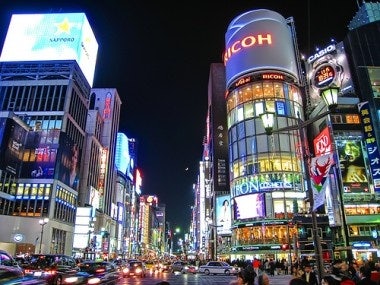Mainland Chinese Flocked To Japan During Lunar New Year Holiday#

Nearly one year after avoiding the country in the wake of the devastating tsunami and Fukushima Daiichi nuclear accident, Chinese tourists have returned to Japan in record numbers. Coming just in time to buoy Japanese retailers, many of whom have been stung by a drop in tourist arrivals in 2011, Chinese travelers flocked to Japan over the course of the Lunar New Year holiday, bringing much-needed cash to Tokyo luxury boutiques, ski slopes in Hokkaido and Kyoto tourist traps. According to Japanese tourism authorities, the return of Chinese tourists has been as dramatic as it has been a relief, with a record 80,000 arriving in December alone, a 32 percent increase year-over-year. Authorities expect another double-digit increase in January as well.
As the Wall Street Journal points out this week, the growing importance of big-spending Chinese tourists to Japan's tourism industry has been made starkly apparent over the past year, and in many ways reflects Japan's economic reliance on its larger neighbor. From the article:
The recovery in Chinese tourism, which started around September, serves as a reminder of how Japan relies on China's powerful economic growth to prop up its own economy ailing from a long malaise and a shrinking and aging population. China is now by far Japan's largest trading partner, and its direct investments in Japan have grown sharply in recent years, albeit from low levels. The rebound in Chinese tourism stands out as the number of visitors from other nations like the U.S. and South Korea remains below pre-March 11 levels.
The Japanese government has actively sought Chinese tourists in recent years, easing visa requirements in order to expand such travel. Expectations for growth are huge. As part of Tokyo's long-term economic growth strategy,
Japan hopes to increase the number of foreign visitors to the nation to 20 million by 2020 and counts on Chinese visitors to make up six million of the total
. The number of visitors to Japan fell 28% to 6.21 million last year, the lowest level since 2003, due to the nuclear accident and the sharp increase in the value of the yen against the U.S. dollar and other currencies, making Japan an increasingly expensive place to travel. The number from China tumbled 26% for the full year to 1.4 million, though it was still nearly twice the level of five years ago.
"In this tough global economic environment, growth industries are hard to find. Chinese tourism is among the very few promising ones, and we need to promote it seriously," said Daisuke Tsubokura, a researcher at the government-run Development Bank of Japan.
Though Japan faces tougher competition for Chinese tourists from nearby countries like South Korea -- whose department stores heavily marketed Lunar New Year promotions in China this year -- the range of options available to tourists to Japan, and the greater ease of getting there from China, has made it an increasingly popular destination despite last year's nuclear and natural disasters. While this has been good for retailers in cities like Tokyo, it's been perhaps even better for ski slopes, temples and historical sites in far-flung regions of the country. As Jing Daily noted last November, China's steadily growing ranks of skiers have bolstered hard-hit ski resorts in Fukushima, with some recording winter bookings at around 70 percent of pre-quake levels. Surprisingly, bookings have been strong even at ski resorts quite close to the nuclear accident site, with Hoshino Resort Co. expecting occupancy rates at 60-80 percent of 2009-2010 levels.
